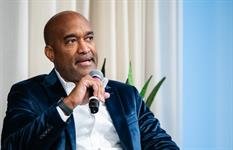
How to reach your audience in a more personalized avenue.
Email is a necessary communications tool. But with dozens of messages a day and information overload, some emails get lost in the mix, never having a chance to make their intended impact.
You may think you’ve nailed your email strategy inside and out, but chances are, you’re missing some opportunities to reach employees, clients or journalists, Devon Owens, communications manager at Workshop, said during Ragan’s Employee Experience Conference.
There is a formula to move past the noise and ensure that your email lands every time, she said.
Here’s how to do it.
- Your subject line sets the tone: This should be between 21 and 40 characters. Once it reaches more than 80 characters, or the length of a sentence, open rates drop. “It may seem like a good place to sprinkle in extra wordplay and clever language, but clarity and tone are going to go a long way,” Owens said. Think of your subject line as a headline. What’s the most important takeaway? What’s key? This should be emphasized in your subject line. Short, clear and direct subject lines are best, she said. You can also use AI tools to assist with subject lines.
- Smaller sends equal more engagement: “You might assume that sending an email to more employees will get you a higher open rate, but it’s actually the opposite,” Owens said. When you send an email to a specific audience, there’s a chance for better segmentation, or a message that is tailored directly for those recipients. The message feels more personal. Emails sent to less than 1,000 recipients at a time perform better than those that go to more than 1,000 recipients, she said. “This is where targeting really shines,” Owens said. Make lists for specific departments and really try to hone your message toward that group of people.
- Keep employees engaged with interactive content: Even the best email won’t land if your recipients stop reading it halfway through, Owens said. So give your audience a reason to keep reading. Keep your emails short and snappy. Put in the necessary information first. If there’s an RSVP or some other action item, put it at the top, Owens said. Long, dense emails lead to low engagement rates, so keep the information relevant. Place a “Click More” link for more information beyond the email.
- Consider timing: An audience is more likely to open emails during work hours, which seems like a no brainer, but this means it’s important to consider time zones, Owens said. You can create email send times based on work locations and time zones. This should be done to respect your employees’ work hours and also to ensure that the email doesn’t go unnoticed, Owens said.
To learn even more tips for improved employee engagement and experience, head over to view Owens’ presentation at Ragan Training here.
Courtney Blackann is a communications reporter. Connect with her on LinkedIn or email her at courtneyb@ragan.com.
The post 4 tips for better email communication appeared first on PR Daily.














